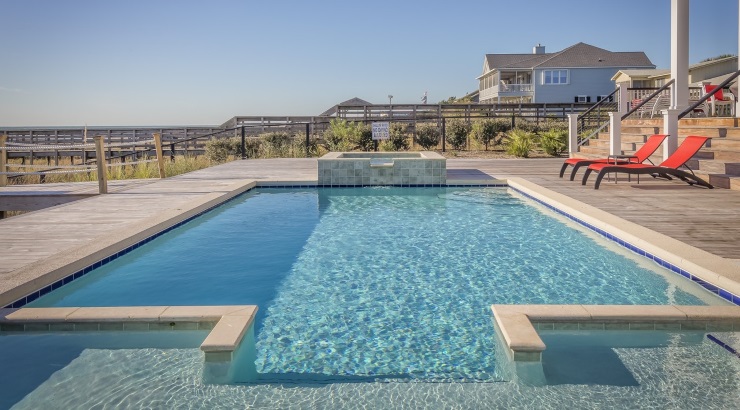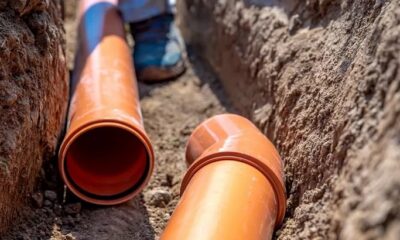Features
Swimming Pool Construction
Everything you need to know about swimming pool construction.

A swimming pool is a man-made water holding structure that is used for sports, leisure, or workout. Swimming pools are mostly sunk into the ground, although they can be built above the ground or fitted as part of a building or structure such as a cruise ship.
Above-ground pools are usually assembled from pre-fabricated kits, making them the easiest and cheapest to construct. However, these facilities often raise safety concerns since it can be difficult to see into the pool from the surroundings.
Swimming pools vary in size, shape, and depth depending on their intended use. Private pools – built at private residences – have average sizes of 3.7m x 7.3m to 6.1m x 12.2m.
On the other hand, most public pools are rectangular with lengths of 25m-50m, while competition pools must be 25m-50m long, at least 1.35m deep, and at least 8-lanes wide.
There are three main types of pools: fiberglass, concrete, and vinyl liner, the main difference between them being the method of construction for the ‘swimming pool basin’.
1. Fibreglass swimming pools
Fiberglass swimming pools are “built” in two stages: manufacturing and installation. At the manufacturing stage, fibreglass-reinforced plastic is moulded off-site into a basin shape to fit the required specifications.
Once this is done, a hole is dug at the site and a base material is placed at the bottom of the pit for the swimming pool to sit on. The pool is then transported to the site in one piece.
After the necessary plumbing installation, the swimming pool is lowered into the pit with a crane or any other similar equipment. Backfilling is done round the pool and in most cases a concrete deck is built around the perimeter.
2. Vinyl lined swimming pools
Construction of vinyl lined swimming pools starts with the excavation of a hole at the desired location of the pool. A metal, plastic or timber frame wall is then made around the perimeter, after which sand filler is placed at the bottom of the hole, a vinyl-lining secured to the perimeter wall.
These thin vinyl-lining (usually about the width of ten sheets of paper) is used to hold the pool water in the structure of the structure of the swimming pool.
Vinyl lined pools tend to be cheaper compared to other in-ground swimming pool types but are less durable because the pliable liner requires replacement every ten years or so.
3. Gunite swimming pools
The process of building a gunite pools usually starts with excavation of a hole. Once this is done and the plumbing is put in place, the workers assemble a framework grid with steel reinforcing rods (rebar).
The reinforcing rods are spaced about 10 inches apart, and secured together with cable. Once the grid is in place, the workers spray a heavy coating of gunite (a mixture of cement and sand) around the rebar.
The spraying machine combines dry gunite mix with water just before squirting to produce wet concrete material. This is spread across evenly and left to cure for a week or two before the pool is finished with plaster, special concrete paint or pebble surfaces.
4. Concrete swimming pools
These are quite similar to gunite pools the only difference being that instead of spraying gunite, concrete is emptied into conventional timber formwork.
After the excavation of the hole, steel rods are fastened into place. Concrete is then emptied or shot into place forming the pool shell. Once tile and coping works are completed, plaster finish is spread across the surface of the pool shell.
FAQs
How long does swimming pool construction take?
This depends on the type of pool. A fiberglass pool project takes 3-6 weeks to complete, while gunite and concrete pools, which are fabricated on site, take longer to complete: usually 2-5 months. Vinyl liner pool installations are quicker than fiberglass pool installations.
How close to a house can a pool be?
All swimming pools must be located at least 10 feet away from the walls of a house. This is a safety measure aimed to shield electrical wiring from water leaks, floods, and splashes.
How much does it cost to build a swimming pool in Kenya?
A large 6.0m x 12.0m swimming pool will cost you Sh2.8 million, inclusive of excavation, labour and materials, while a smaller 6.0m x 8.0m pool can cost you about Sh2.0 million.












